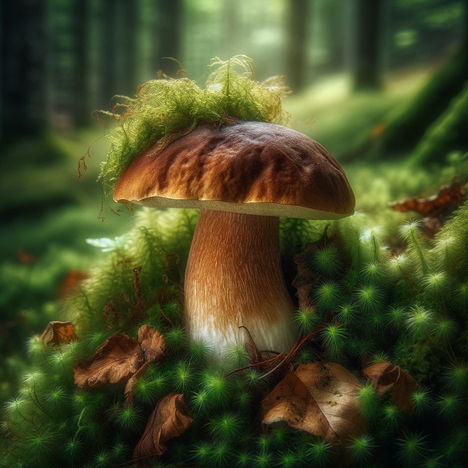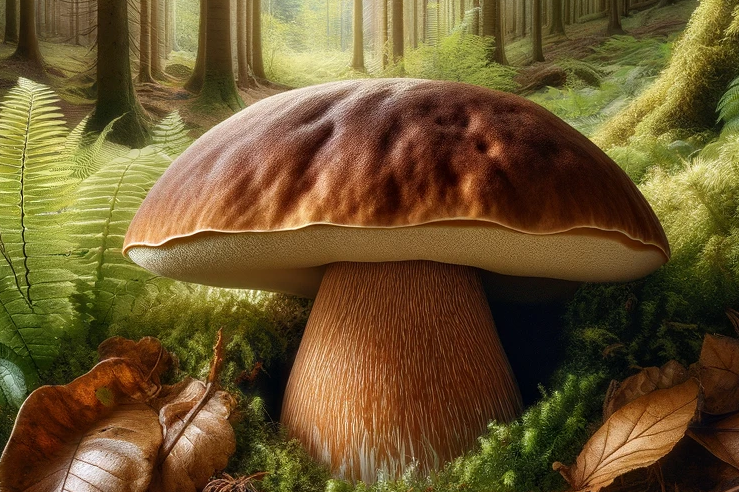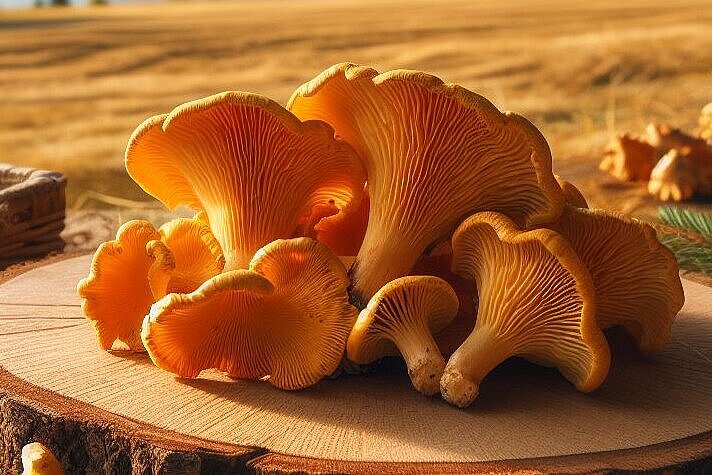Common boletus

The common porcini mushroom, a jewel among edible mushrooms, is not only finding its place in sophisticated human cuisine, but is also arousing increasing interest in the world of dog nutrition. But what makes this mushroom so special, and is it really a good choice for our four-legged friend? In this article, we take a deep dive into the world of the common porcini mushroom, explore its properties and carefully weigh up the pros and cons of including it in our dogs' diets.
What is the common boletus?
The common boletus (Boletus edulis) is a member of the boletus family and is known for its nutty taste and firm texture. It grows in forests in Europe, North America and Asia and is used both fresh and dried in the kitchen. But not only humans, dogs could also benefit from this nutritious mushroom - or could they?
Nutrients and benefits
High nutritional value
The common porcini mushroom is rich in proteins, vitamins (especially vitamin D) and minerals such as selenium, copper and potassium. These nutrients are essential for maintaining your dog's health, supporting the immune system, promoting strong bones and contributing to a shiny coat.
Digestive support
Thanks to its high fiber content, the common porcini mushroom can also aid your dog's digestion. Fiber is important for healthy intestinal flora and can help prevent constipation and reduce the risk of indigestion.
Possible risks and disadvantages
Potential toxicity
Although the common porcini mushroom is considered safe for humans, certain ingredients can cause digestive problems in dogs. Symptoms such as vomiting, diarrhea and lethargy are possible signs of intolerance or poisoning.
Difficulties in processing
Dogs have a different digestive system to humans, which means they may have difficulty processing certain components of porcini mushrooms. This can affect the absorption of nutrients and lead to gastrointestinal discomfort.
Allergic reactions
As with any new food ingredient, there is a risk of allergic reactions when introducing porcini mushrooms into your dog's diet. These can range from skin rashes to severe anaphylactic reactions.
Recommendations for dog owners
If you are considering feeding your dog porcini mushrooms, start with small amounts and observe how he reacts. It is advisable to cook the mushroom before feeding to reduce potential contaminants and improve digestibility.
The common porcini mushroom is undoubtedly a nutrient-rich food that can offer potential health benefits for your dog. However, there are risks associated with its introduction into your dog's diet. It's important to be careful and monitor your dog's reaction carefully. In the right amount and form, porcini mushrooms could be a valuable addition to your dog's diet, but your dog's safety and well-being should always come first.
If you notice any signs of hypersensitivity or poisoning in your dog, you should see your vet immediately. We are not a substitute for a vet, but we try to be as accurate as possible. Every dog reacts differently and we recommend you get a second opinion or consult your vet if in doubt.
Stay healthy and take good care of your four-legged friend!😊
Similar to Common boletus
The chestnut bolete (Boletus badius), also known as the chestnut mushroom, belongs to the boletus family and can be found in many forests in Europe and North America. Its characteristic feature is...
Chanterelles are a type of mushroom from the stubble mushroom family. They have a yolk to golden yellow cap, which is funnel-shaped, and ridges on the underside of the cap that run down the stem....
The deciduous forest red cap, botanically known as Leccinum aurantiacum, belongs to the family of the thick-cap relatives and is mainly found in temperate deciduous forests. A characteristic feature...
Butter mushrooms belong to the genus of the butter mushrooms and can be found in forests and meadows. They are known for their characteristic, slightly nutty flavor and soft texture, which gives...



